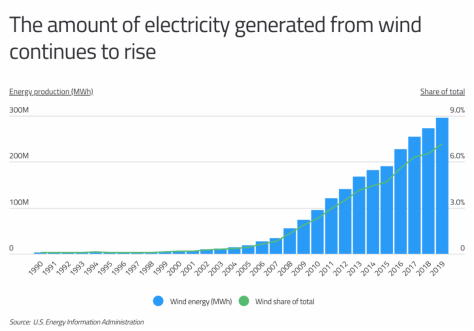The Inflation Reduction Act earmarked generous subsidies to supercharge US green investment. Yet, one of those green investments – offshore wind projects – is struggling to turn a profit. This is leading to the delay and outright shutdown of some of the nation’s largest, and most promising projects.
Offshore wind farms have always held great promise. To begin, they produce more energy than onshore farms due to the strength of the wind and its regular flow at sea. An offshore wind farm’s environmental footprint is also smaller than traditional fossil fuel power plants and countries with access to the sea can naturally increase their installation and production capabilities.
The challenges for offshore wind farms, however, are also just as noticeable. First, corrosive saltwater, harsh weather conditions, and strong currents make the wind turbines at sea more complicated to build as well as maintain. Second, although offshore wind farms are less pricey than a decade ago, they still remain more expensive to build than many other forms of renewable energy. Lastly, the transmission lines (undersea cables) are an additional cost that is not needed with onshore farms to ultimately connect the offshore farm to the power grid.
Ørsted is a Danish renewable energy firm and one of the largest offshore wind farm developers. Earlier in the month the company announced it had lost a quarter of its market value due to debilitating impairments surrounding three wind projects off the east coast. This resulted in a downgrading of Ørsted’s stock which will hinder their ability to raise debt to fund future plans. Higher interest rates, rising costs, and permitting delays have hampered the Danish firm and this will certainly affect President Biden’s plans to have 30 gigawatts of offshore energy by 2030. As of today, the US has less than 50 megawatts.
Two other giants – Avangrid and Shell – have called it quits on offshore developments and many of the leading firms that fabricate offshore turbine blades are hemorrhaging money. Rising interest rates are the most concerning for offshore wind projects as the farms take much longer to build than other renewable projects. The upfront costs, as mentioned earlier, only add to the problem. The cost per kilowatt of building a solar facility is roughly $1,050. For onshore farms, it increases to $1,360, but for offshore wind farms, the expense is four-fold ($4,000 + per kilowatt).
In general, offshore wind projects are not linked to inflation. Developers take on a substantial risk in high inflationary environments as their future revenue is already locked in and input costs end up ravaged by rising prices. This eats into profits and the developer’s ability to get the farm up and running. While offshore wind farms hold promise, they might only make sense when the economy is healthy and thriving. Now is just not the time.











